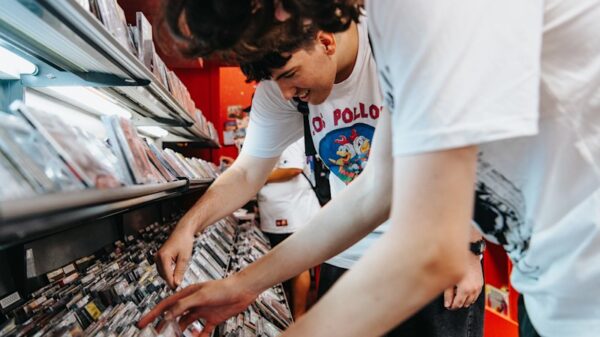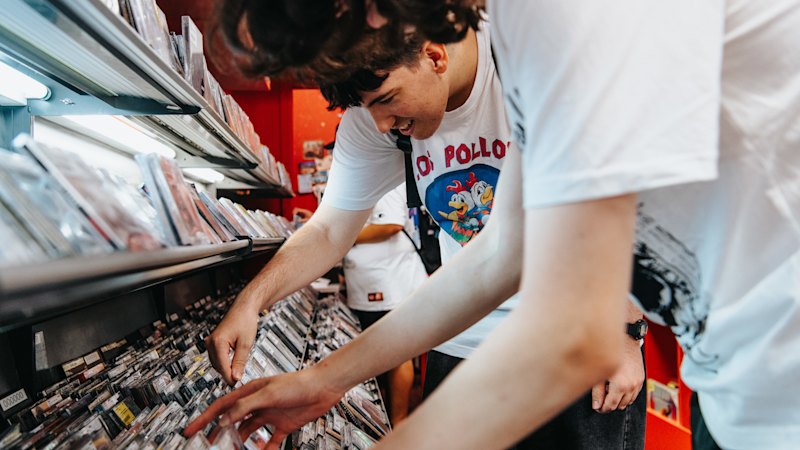The resurgence of cassette tapes and CDs is being fuelled by a growing demand for physical media, as fans seek tangible connections to their favorite artists. This trend, which follows the earlier revival of vinyl records, is reshaping the music industry landscape, offering artists a more reliable income source compared to streaming platforms. For many, the tactile experience of handling audio formats has become a vital aspect of music consumption.
Reviving a Vintage Market
According to analysis from IBISWorld, vinyl record manufacturing in Australia generated approximately $287.4 million in revenue between 2020 and July 2025, while CD duplication and replication contributed about $49.7 million. The Australian audio industry has been revitalized since the mid-2010s, overcoming a period when local vinyl manufacturing nearly vanished. Now, the number of pressing plants has tripled, driven by nostalgia and the unique qualities of physical formats.
Consumers are rediscovering the warmth of analog sound, as well as the collectible nature of vinyl, CDs, and cassettes. One customer at Red Eye Records, Aidan Mulholland, expressed that the experience of engaging with a physical medium offers a connection that digital platforms like Spotify cannot replicate.
The low royalties paid by streaming services have also prompted artists to shift focus to physical formats. For instance, streaming platforms like Spotify pay between $0.003 and $0.005 per stream, leading many musicians to embrace CDs and cassettes as a viable source of income. Bands such as King Gizzard & the Lizard Wizard have even removed their music from these platforms in protest, further enhancing the appeal of their physical releases.
Market Dynamics for CDs and Cassettes
While vinyl remains the dominant format, the demand for CDs and cassettes is growing. Scott Wilson, owner of Replicat, noted that these formats are more affordable for emerging artists. For example, production runs of CDs and cassettes can start at around $6 each, allowing artists to sell them for $15 to $30. In contrast, the cost to produce vinyl records is significantly higher.
Physical media not only serves as a product but also as a symbol of support from fans. Wilson emphasized that purchasing a physical album connects listeners directly to the artist and provides a keepsake. The rise in cassette production has also led to new creative opportunities. Artists like Taylor Swift are releasing albums in multiple collectible variations, with unique colors and designs appealing to fans.
The revival of cassette production has been particularly notable at Dex Audio in Melbourne, the last high-quantity cassette-duplicating business in Australia. Co-founder Greg Williams recalled a time when the equipment was nearly discarded due to a lack of orders. Now, with the resurgence of interest, Dex Audio is projected to produce around 10,000 cassettes in the upcoming months, highlighting a busy period coinciding with the holiday season.
Despite the excitement surrounding these formats, a curious challenge has emerged: many young fans purchasing cassettes and CDs often lack the devices to play them. Williams noted that while cassette players are making a comeback, many consumers are still searching for second-hand machines to enjoy their new purchases.
Manufacturers are responding to this demand. Companies like We Are Rewind are producing modern cassette players that incorporate Bluetooth technology, making them appealing to both older generations and younger fans who might be discovering these formats anew through popular culture.
As retailers prepare for the holiday season, they are stocking a wide range of music formats to cater to diverse tastes. Classics like Fleetwood Mac’s “Rumours” and Pink Floyd’s “Dark Side of the Moon” remain popular, while new releases from artists like Rosalía are expected to be in high demand.
The combination of nostalgia, creative packaging, and the quest for a deeper connection to music is driving this retro audio boom. As fans embrace the physicality of music, it becomes clear that the past is once again relevant in shaping the future of the industry.





























































